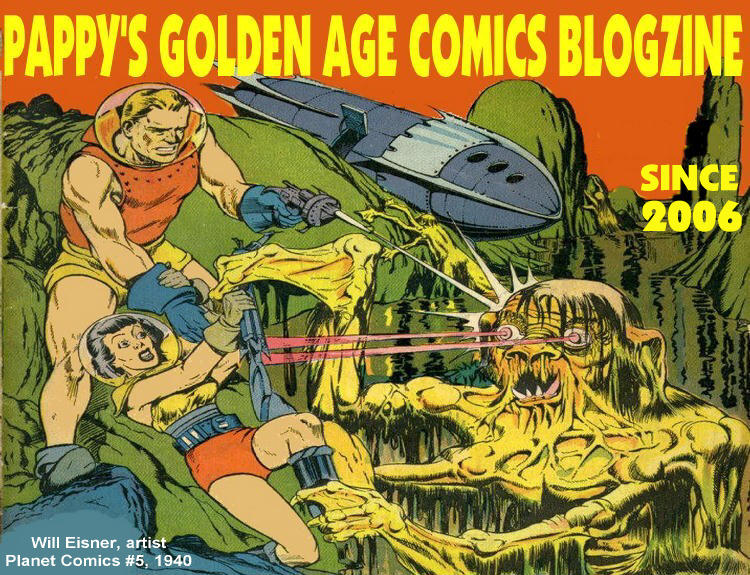
Number 565
Snowman
Not Frosty the Snowman. Just
Snowman.
If
Tally-Ho Comics #1 (and only) had not been known as the professional debut of Frank Frazetta, it might alternately be known as one of the most off-the-wall comic books published during the 1940s. The cover makes it look something like a kiddie comic, but the interior is anything but. In the lead story, Snowman's nemesis, Fang, is a very scary looking guy. Since there was never another issue we don't know what Snowman was, exactly...or what Fang was, either. John Giunta and Frazetta drew the story, but I don't know who wrote it. H.G. Ferguson, who was Simon and Kirby's letterer on their crime and love comics, did the "lettering designs," one of the only times I've ever seen a letterer so identified in a Golden Age comic book.
Tally-Ho is listed on the inside front cover as being published by Swapper's Quarterly, Chicago, IL, and the
Overstreet Comic Book Price Guide says Baily Publications, in parentheses. I don't know how they knew that, but if it's true then Golden Age comic book artist, Bernard Baily, likely had something to do with it.
Overstreet dates it as December 1944. To add to the mystery about
Tally-Ho, the undated indicia lists no copyright claim. The Swapper's Quarterly publishing credit could have been that being produced during World War II maybe Swapper's Quarterly, of Chicago, IL, had a paper ration that they used to print
Tally-Ho.


















































